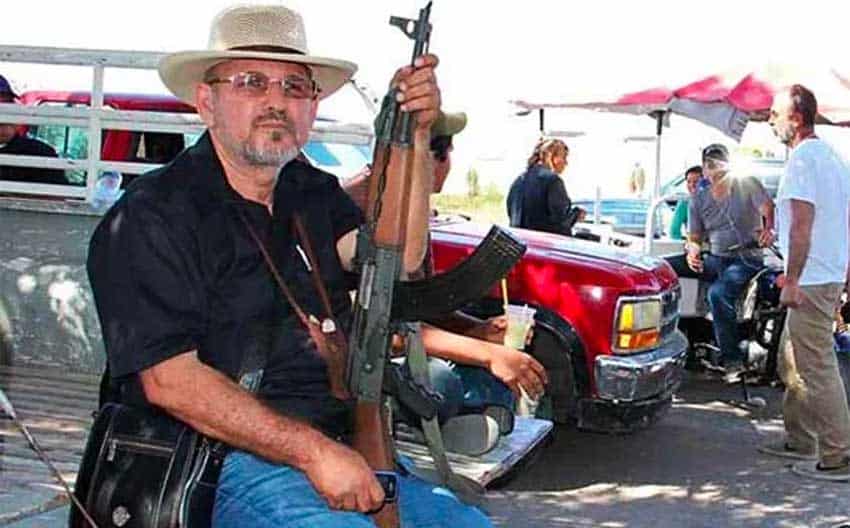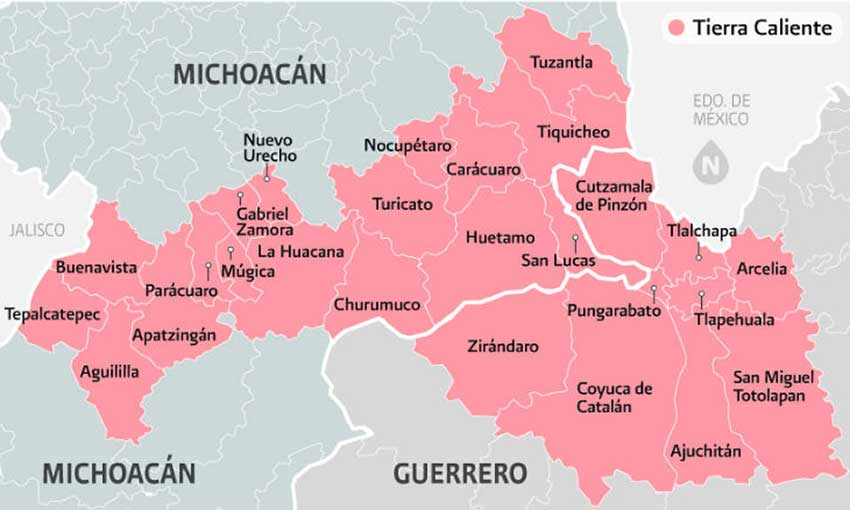Six years after citizens staged an uprising against Los Caballeros Templarios cartel and other criminal groups in the Tierra Caliente of Michoacán, violent crime in the region and state is even worse.
Figures for intentional homicides, firearms injuries, kidnappings, threats and drug dealing in Michoacán were all significantly higher last year than in 2013.
Confrontations between criminal gangs are frequent and the spiraling crime rates – there were 1,060 homicides last year compared to 475 in 2013 – have left many people running scared.
Among those terrorized are widows of self-defense force members who lost their lives in Tierra Caliente clashes with cartel members.
Some of the narcos have returned to the towns as members of different criminal gangs and with their husbands’ executioners at close quarters, the women – and other residents – are terrified.

“We’re worse off than before,” said Hipólito Mora, founder of the self-defense force in La Ruana, where citizens took up arms on February 24, 2013, the first town in the region to to so.
“[There are] a lot of homicides, kidnappings, robberies and extortion. In almost all of Michoacán, there is a serious insecurity problem. Unfortunately, not everyone dares to speak out,” he said.
José Juan Ibarra Ramírez, secretary of the government of Buenavista, the municipality where La Ruana is located, agrees that the security situation has worsened.
“One cannot make decisions like before, we can’t say with certainty that we will go to [the neighboring municipality of] Apatzingán at 8 at night because we’re afraid, our whole community is frightened. Confrontations in the surrounding areas haven’t stopped and there have been some police deaths . . . The night is dangerous . . .” he said.
An army colonel was also killed in Buenavista last month, the first high-ranking military fatality since the López Obrador-led federal government took office on December 1.
According to Michoacán Governor Silvano Aureoles, a turf war between two of Mexico’s most violent criminal organizations is responsible for much of the bloodshed in the Tierra Caliente region and other parts of the state.
“Los Viagras have their headquarters, let’s say their operational base, in the municipality of Buenavista . . . In Tepalcatepec [southwest of Buenavista], the Jalisco [New Generation] Cartel has a beachhead and they want to control the trafficking [of drugs], the route . . .”
Their goal, the governor said, is to break up the local cell of Los Viagras. “That’s the issue.”
An escalation in the violence in recent weeks has been blamed on a gang of sicarios, or hitmen, known as Los Blancos de Troya, who presumably work for the Jalisco cartel. They have been confronting groups linked to the Viagras after announcing their intentions in early February to conduct operations in Buenavista.
As in the days when Los Caballeros Templarios were in control, organized crime is once again having its say in who should govern.
In July last year, the mayor-elect of Buenavista, Morena party member Eliseo Delgado Sánchez, was shot and killed. A woman elected as municipal trustee who was proposed to take his place decided instead to flee Michoacán after receiving threats from a criminal group.
“I [want to] make my resignation public, I [want to] make it public that politics doesn’t interest me . . . I’m leaving the country, I will never again participate in political life . . .” Elvia del Socorro Ortega said in a video posted to Facebook in September.

The next day, she posted another video from Tijuana, reiterating that she had given up political life for good.
Buenavista’s Ramírez said that more and more women are now being affected by the violence plaguing Michoacán’s Tierra Caliente.
“Two months ago, violence spread a bit more to women, there were some confrontations and some very young women died,” he said, explaining that some of them were likely married to or in relationships with gang members.
A total of 144 women were murdered in Michoacán last year and a further seven lost their lives to violence in January.
There were almost 1,300 missing people in the state as of last April, of whom almost 300 disappeared in the Tierra Caliente region.
Hipólito Mora said that five young men including his nephew were abducted in La Ruana last month.
“. . . They weren’t involved in anything, not with one cartel or the other. Their only sin is that they were drug addicts . . . but they weren’t halcones [hawks or lookouts for drug gangs]. They were nobodies but they were taken . . .” he said.
